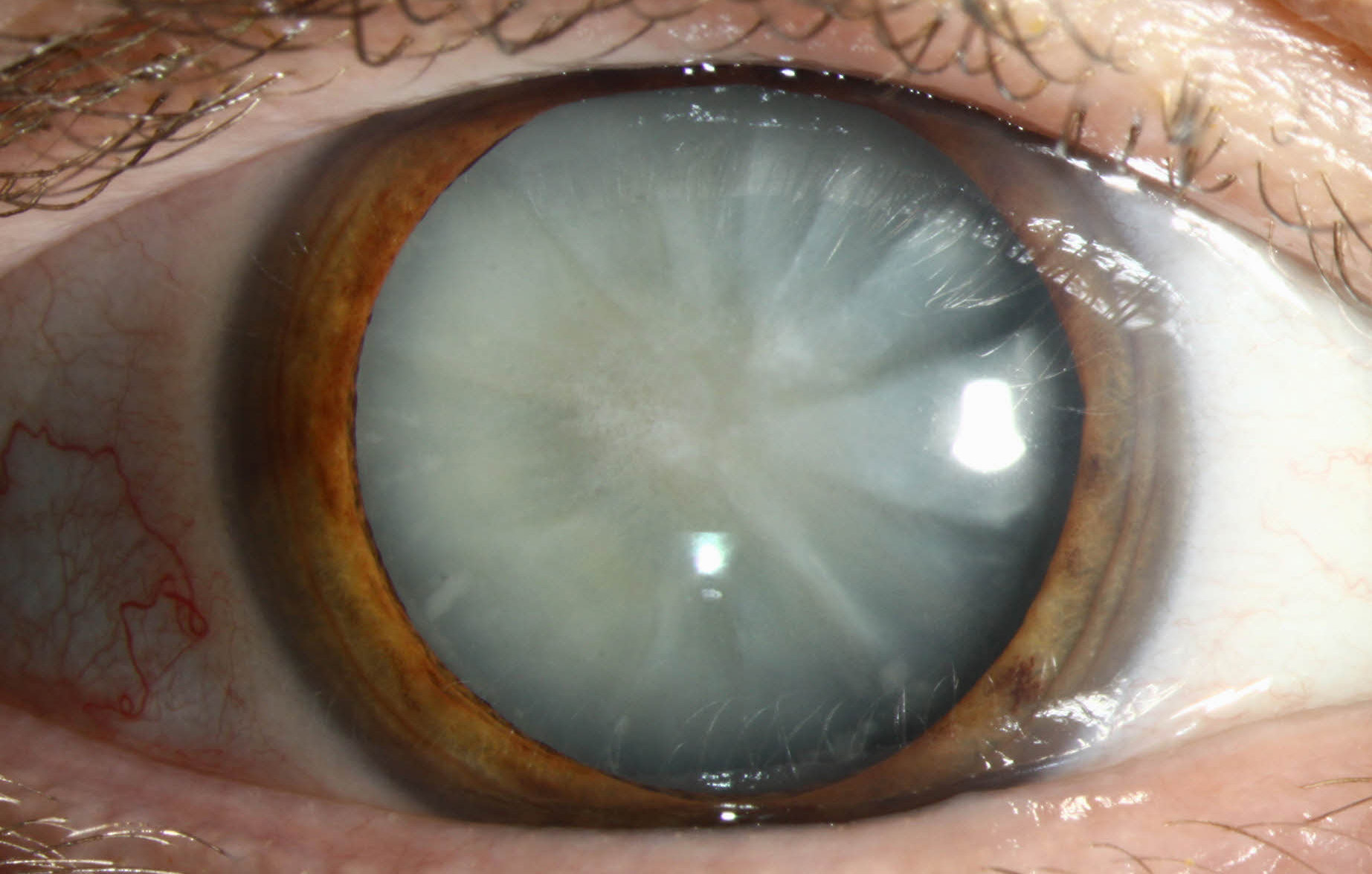 |
| Prior to surgery, nuclear cataract patients were not as severely affected in their daily activities, while cortical and posterior subcapsular cataracts had most of the complaints related to objections with reflections, such as traffic signs, study shows. Photo: Christine Sindt, OD. Click image to enlarge. |
It’s axiomatic that any patient with cataract development advanced enough to warrant surgical removal will report beneficial outcomes after the procedure. But how does patient response differ based on the form of cataract? That was the question of interest to a group of researchers from Latvia, who assessed visual outcomes of cataract surgery using a post-op quality of life questionnaire. They found that, overall, cortical cataract patients’ quality of life improved the most, followed by nuclear and posterior subcapsular patients. Their results were recently published in Journal of Optometry.
A total of 210 cataract patients were divided into three cataract groups based on their cataract type: nuclear (38.1%), cortical (33.3%) and posterior subcapsular (28.6%). The patients completed the Visual Function Index questionnaire before, two weeks and one month after bilateral cataract surgery. The results were compared over time and between the cataract groups.
Cortical cataract patients had the lowest questionnaire score before cataract surgery. Postoperatively, cortical cataract patients experienced the greatest improvement in near distance vision daily activities, while posterior subcapsular cataract patients experienced the greatest improvement in far distance daily activities. Before surgery, nuclear cataract patients had the highest questionnaire scores compared to the other cataract groups.
“Before surgery, nuclear cataract patients were not as severely affected in their daily activities as cortical and posterior subcapsular cataracts had most of the complaints about daily activities related to objections with reflections, such as traffic signs,” the researchers explained in their journal article on the work.
Cortical cataract patients experienced the biggest trouble doing handwork and had the biggest improvement after cataract surgery. However, cortical cataract patients experienced the greatest improvement in near distance tasks, such as reading and sewing.
“The refraction of the lens before surgery (whether the patient is myopic or hypermetropic) had a greater impact on daily tasks than the location of the opacity,” the authors wrote.
A previous study discovered that myopia was more common among individuals with nuclear and posterior subcapsular cataracts, while hyperopia was less prevalent in those with cataracts.
“From these findings, we can conclude that the location of the opacity primarily affects vision functions such as contrast sensitivity, glare and color vision, while the refraction of the lens influences visual acuity-related tasks,” the authors explained.
Before and after surgery, the type of cataract did not have an influence on different questionnaire scores about reading large print, books, recognizing facts and doing sports activities. There was no difference between cataract group answers after the surgery in terms of seeing steps and driving, the authors noted.
Nuclear cataract patients had the most complaints before surgery, while there was no difference between cataract types after surgery.
The authors add that neuroadaptation may play a role on the final visual outcomes after IOL implantation, as it can take weeks to months to adjust to the new IOL, but the time frame can vary from person to person. “Some people may notice an improvement in their vision shortly after surgery, while others may take longer to adjust,” the authors concluded.
Jansone-Langina Z, Solomatin A, Solomatins M, Krumina G. Quality of life assessment for nuclear, cortical, posterior subcapsular patients before and after cataract surgery. J Optom. 2024;17(2):100489. [Epub ahead of print]. |

